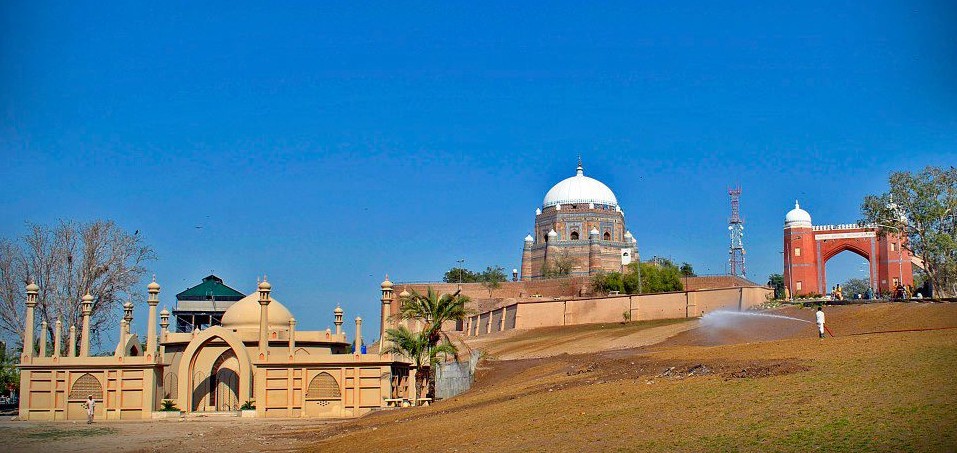The history of Multan is the history of the sub-continent. Every invader from Alexander, through the Mughals, right up to the British has fought for control of the city.
Multan, one of the most ancient living cities of Pakistan, has the distinction of possessing an almost uninterrupted history of religion political activities spread over a period of not less than five thousand years. Multan has the longest continuous history in Punjab. Originally, the river Ravi flowed through Multan. But about 300 years ago the river turned its course westward. It is now the river Chenab which flows close to this ancient city. It is also said that Alexander the Great conquered the city in 326-325 BC after a fierce battle
Hieun Tsang, the famous Chinese pilgrim visited this great city in 641 AD. He called it “City of the Temple of the Sun “. When Muhammad Bin Qasim captured the city in 712 AD, it was a part of Raja Dahir s kingdom. Arab geographer Masudi visited Multan in 915 AD and found it under a Quraish King. In 980 AD, the town fell to a Karamti Tribal Chief When Mahmood Ghaznavi invaded the sub-continent, the Karamti ruler of Multan allied himself with Anandpal. In 1010 AD, Masud, the son of Mahmood became the Governor of Multan.
After Shahabuddin Ghauri, in the thirteenth & fourteenth centuries, Multan suffered from Mongol raids. In 1527, Multan was captured by Babar. Under the Mughals the city enjoyed a period of peace and prosperity. After the disintegration of Mughal rule, Multan became a province of Afghanistan. Multan was captured by different Muslim rulers till the Sikh period. The last king of Sadozai dynasty was Nawaz Muzaffar Khan, who died in action culminating in the capture and sack of Multan by Ranjit Singh in 1818. In the beginning of 1818, Ranjit Singh raised a big army comprising of 25,000 soldiers at Multan. At this time the famous Zamzama Gun was also brought to Multan.
Multan was captured by the British after a long struggle with the Sikhs and it came under the total control of British forces. Although during the British period, peace prevailed in the region, no real progress was made. At the time of independence in 1947, Multan was in fact a forgotten region.

